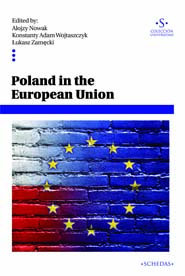
Poland in the European Union
Disponible en papel encuadernado en rústica (150 págs.) y en EPUB y Kindle a través todas las tiendas Amazon, Google Play Books y Apple iBookstore.

Disponible en papel encuadernado en rústica (150 págs.) y en EPUB y Kindle a través todas las tiendas Amazon, Google Play Books y Apple iBookstore.
Poland joined the European Union in 2004. Over ten years after the accession, it is great time to evaluate this first period of Polish membership in the EU, a task that is all the more compelling given that Poland became a member of the Community as a less developed country and its political position on the continent was much weaker than it is now. In those ten years, the gross domestic product almost doubled, the GDP at purchasing power parity increased by almost 20 percentage points, and export levels almost tripled. Poland’s role in Europe has grown stronger, as Polish political initiatives command greater attention and translate into European reality, Poles hold positions of power in the political structures of the Community, and the ‘Poland’ brand inspires increasingly positive associations among European citizens.
Poland is one of the reasons why the traditional division between Eastern and Western Europe is slowly becoming a thing of the past, and the country is starting to be considered a reliable partner for Northern European states in the emerging North-South set up. Poland is also still one of the most pro-European countries in the EU, which also contributes to its growing importance on the continent.
This success could not have happened without Poland’s accession to the European Union and the influx of financial support from the EU. Naturally, the past decade was by no means an unbroken string of success, but the final balance is definitely positive.